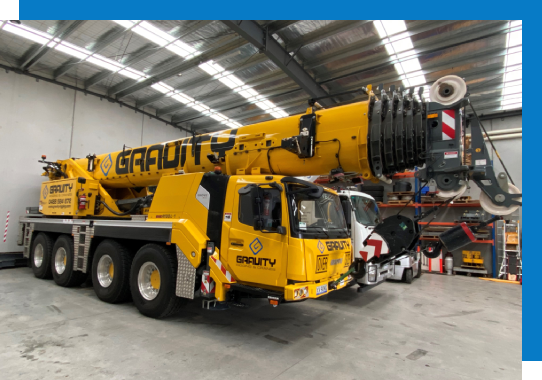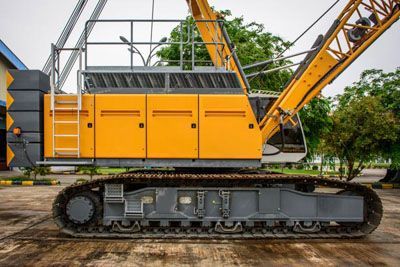Crane hire is only one step when it comes to good construction planning – here are the others
You might want to hire the biggest, the tallest, the strongest crane of our fleet – but is it really the best choice for the ground conditions your site is on, or the number of materials being moved, or without other items the crane might need for assistance?
Poor site planning for the crane type used on your site can result in costly or dangerous repercussions – including falling materials, operational failures, or even structural collapse.
Let’s run through just a few of the key considerations to keep in mind when going through the process of construction and site planning, and how they might influence choosing the right type of crane for your needs.

Load size, weight, and usages for proper crane hire
The physics of crane operation might have stayed the same for years – but technology has come a long way, and has allowed for a wide variety of commercial cranes for different usages and weight preferences to come on the market.
After all, just because cranes lift doesn’t mean they can lift everything. Any construction professional should know that one type of crane shouldn’t be used for everything on their site, so in the same vein it’s important to consider the specific types of lifting needed for your particular project and how you can make the best decision of crane types for that use:
Franna cranes

These road-worthy mobile cranes have become popular for their easy mobility and speediness between sites or locations over their strength, possessing a lifting capacity of 10 to 25 tonnes.
Crawler cranes

Crawler cranes are slower than other mobile cranes, but much more heavy-duty when it comes to intense loads, carrying up to 600 tonnes or more.
Fixed cranes

Fixed cranes take more time to construct and dismantle, but are ideal for long term usage or for frequent lifting.
Ground and environmental conditions for site planning
Assessing the specific conditions of your site and ground is just as important for your construction equipment hire as what is being built on it. Poor logistics when it comes to ground, site, or environmental conditions can lead to severe project delays, and thus can put a hold on the project as a whole.
Uneven, soft, or varying earth types can impact the specific crane types that are best suited for your worksite. These types of terrain can require cranes with specific counterweights or adjustment plates to keep them from rolling over or collapsing from structural failings. A wide range of specific attachments – such as hooks, stabilisers, and lifting mechanics – might also be required to be hired alongside your crane if you know they’re needed for specific uses.
At the same time, there are other types of obstructions to look out for when considering crane hire on a site. Power lines or tree branches might require mobile cranes to fit into tighter locations, or cranes that have longer boom reach to properly manoeuvre around them.
Environmental considerations, too, can be easy to overlook when it comes to construction planning. Specific environmental factors to consider include weather planning for periods of intense rain or wind that might adversely affect the operation of your crane.
Timeframes are also an essential part of planning, which can be vital to the service of your crane hire and how cranes might be best suited for different stretches of time allocated for different services.
Get the right crane to lift you from your worries
Once you’re fully prepared and planned for your construction project, the last step is hire! Gravity Rigging & Machinery have the best range of crane hire for all uses, so get in touch with us today.
